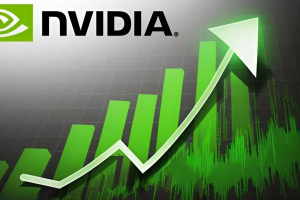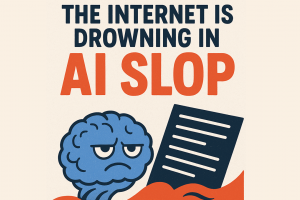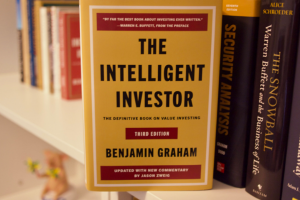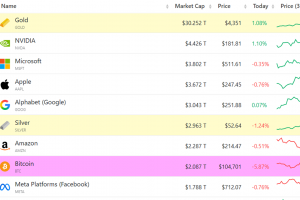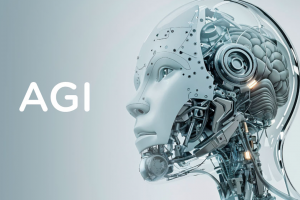What if I told you the same chip that makes video games look stunning is now powering AI, finance, and healthcare? GPUs have moved beyond graphics — they are now the gold of the data economy. From cloud gaming to cancer detection, GPUs are redefining our world. In this essay, discover how GPUs went from “gaming gear” to the backbone of modern civilization, and why understanding this revolution could shape your future.
Stop for a second and imagine this: The same chip once used to power your favorite video game is now powering the world’s biggest AI breakthroughs, Wall Street trading algorithms, and even the data centers behind your favorite apps.
GPUs are no longer just about graphics. They are becoming the new gold of the global data economy — and the story is only beginning.
1. From Pixels to Powerhouses
For decades, the Graphics Processing Unit (GPU) was known mainly as the hardware that made video games look stunning. But in the last ten years, its role has completely transformed. Today, GPUs are the backbone of artificial intelligence, scientific simulations, self-driving cars, and cloud computing.
Why? Because while CPUs (central processing units) are great at doing a few tasks quickly, GPUs can handle thousands of operations simultaneously. That makes them perfect for modern workloads like machine learning, big data analytics, and 3D rendering at scale.
💡 Fact Check: Nvidia’s GPUs now power over 80% of the global AI training market, with chip demand so strong that supply chains are under constant pressure.
2. The Data Economy: Why GPUs Are the New Oil
We live in a world drowning in data. Every day, humans create 328 million terabytes of data — from TikTok videos to bank transactions to medical scans.
Data is today’s oil. But oil is useless until refined. Similarly, data is useless until processed. That’s where GPUs come in: they refine raw data into intelligence, insights, and innovation.
In other words:
-
CPUs were the engines of the Information Age.
-
GPUs are the engines of the Intelligence Age.
3. The Rise of AI Supercomputing
AI is the crown jewel of the GPU revolution. Training a cutting-edge AI model like ChatGPT takes tens of thousands of GPUs working in parallel.
💡 Real Example: OpenAI reportedly trained GPT-4 on 10,000+ Nvidia GPUs.
Without GPUs, breakthroughs like self-driving cars, generative AI art, or drug discovery would be impossible. Every big tech company — Google, Amazon, Microsoft, Meta — is investing billions in GPU infrastructure.
In fact, Microsoft’s partnership with Nvidia for its Azure cloud is considered a strategic move as critical as oil deals were in the 20th century.
4. Cloud Gaming & Beyond: A Consumer Revolution
While enterprises use GPUs for AI, everyday consumers are experiencing the shift through cloud gaming.
Services like Nvidia GeForce NOW, Xbox Cloud Gaming, and PlayStation Plus Premium allow players to stream games from the cloud instead of buying expensive consoles or PCs. This Netflix-for-gaming model is powered entirely by massive GPU farms.
But cloud gaming is just the tip of the iceberg. Soon, GPUs will be quietly running in the background of every app you use — from Zoom calls that use AI to reduce background noise, to TikTok’s recommendation engine predicting the next viral trend.
5. Healthcare, Finance, and the Next Frontier
GPUs are not just a tech story; they are a human story.
-
Healthcare: Doctors are using GPU-powered AI to detect cancer in X-rays faster than human radiologists.
-
Finance: Hedge funds use GPU-powered algorithms to predict market moves in microseconds.
-
Science: Climate researchers use GPUs to simulate weather patterns and predict natural disasters.
Everywhere you look, GPUs are reshaping industries.
💡 Data Point: By 2030, the GPU market is projected to exceed $400 billion, making it one of the most valuable sectors in tech.
6. The New Gold Rush
If the 2000s were about smartphones and the 2010s about social media, the 2020s are the decade of GPUs.
Nvidia’s market cap recently surpassed $3 trillion, making it more valuable than Amazon and even challenging Apple. Investors now see GPUs not just as hardware but as strategic assets in the new digital economy.
The lesson? GPUs are no longer “just chips.” They are the infrastructure of the future — the digital equivalent of gold.
7. What This Means for You
So why should you care?
-
If you’re in tech, understanding GPUs is understanding the backbone of your career.
-
If you’re in business, GPUs determine the speed of innovation in your industry.
-
If you’re an everyday consumer, GPUs already shape the apps, platforms, and AI assistants you use daily.
The GPU story is not just about technology. It’s about the future of humanity’s relationship with intelligence and data.
8. Inspiration for the Next Generation
At its core, this is a story of reinvention. A chip once built to make video games prettier is now changing the course of human civilization.
If GPUs can evolve this much, maybe you can too.
🔑 Lesson: Don’t let anyone tell you that your current role defines your future. With reinvention, you can transform just like GPUs did — from “nice-to-have” to “the center of everything.”
Closing Thought
Next time you play a video game, watch a movie on Netflix, or ask an AI assistant a question — remember: it all runs on GPUs.
This isn’t just about gaming anymore. This is about the gold rush of the data economy.
And just like in every gold rush, those who understand the value early are the ones who win big.














